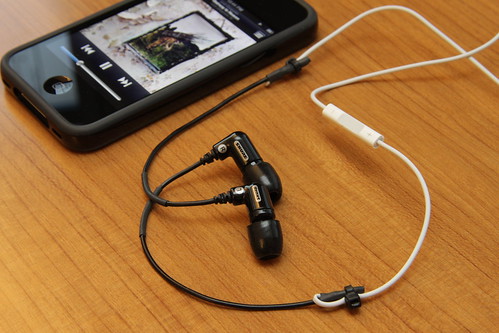| |
|
 |
| DIY: Shure Sound Isolating Earphone + iPhone 4 Earphone |
by Yutaka Tsutano on Flickr |
|
- Are mechanical waves
that are movements of pressure transmitted through solid, liquid and gas.
- Sound is produced by
anything that vibrates or changes air pressure quickly.
- Sound is transmitted
through gases, and liquids as longitudinal waves which are also called
compression waves.
- A compression wave
is when the particles in a wave are close together and not spread out.
|
 | | Diagrammatic View of the Ear | by perpetualplum on Flickr |
| - The mechanical
vibrations that can be interpreted as sound are able to travel through all
forms of matter: gases, liquids, solids, and plasma.
- Sounds come in the
form of sound waves.
- These waves
are caught in the outer ear
- Then they
travel through the ear canal into the eardrum.
- Sound waves
vibrate the eardrum
- Then the sound moves into the inner ear
- Then the hairs
inside the inner ear vibrate.
- This movement sends
signals to the brain, which immediately interprets the sound into whatever it
may be.
|
 |
| I Giovani e la Musica |
by superUbO on Flickr |
|
- Sound can
be transmitted as both longitudinal waves and transverse waves through
solids.
- Longitudinal
waves are waves that have the same direction of vibration as their direction of
travel.
- Transverse waves are waves that are moving
perpendicular to the direction of the waves.
- Sound can travel as fast as 1500 meters per
second.
- Sound travels faster in liquids than in
solid.
|
 NeoK12.com - Educational Videos, Lessons, Quizzes & Presentations
NeoK12.com - Educational Videos, Lessons, Quizzes & Presentations

